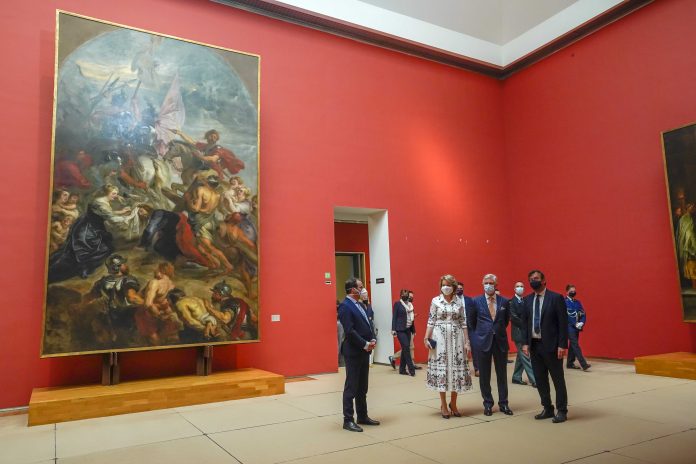
Museums are starting to reopen in some countries as governments ease coronavirus restrictions, but experts warn one in eight worldwide could face permanent closure due to the pandemic.
Studies by UNESCO and the International Council of Museums show 90% of the planet’s museums, some 85,000 institutions, have had to shut at least temporarily.
“It is alarming data that we are giving,” Ernesto Ottone, Assistant Director General for Culture at UNESCO said in an interview with the Associated Press Tuesday.
He said the problem cuts across the board, affecting museums big and small, new and established, featuring art or science.
Museums that indicated they might well not reopen, he said, “have been closed for months and they have no revenues. And they don’t know how they’re going to get their revenues.”
And once they do reopen, Ottone said, “they (won’t) have the capacity to update their infrastructure” to conform with social distancing and other pandemic precautions.
Some costly blockbuster shows have suffered heavy damage this spring. A once-in-a-lifetime exhibit bringing together fragile paintings by Flemish master Jan van Eyck had barely opened in Ghent, Belgium, when it was abruptly canceled. It won’t be resumed, as many of the works were on loan and had to be returned.
In Rome, a similar supershow on Renaissance artist Raphael had to close after just three days, but was able to hold on to all 120 works and will now reopen June 2 through Aug. 30.
Overall, the picture is dark, more Munch than Monet.
“Nearly 13% of museums around the world may never reopen,” UNESCO and ICOM said in a joint statement, saying those in poorer countries faced a greater risk.
Things are pretty bleak in wealthy countries too.
The Network of European Museum Organizations said large institutions in tourist hotspots like Paris, Amsterdam or Vienna have suffered income losses of up to 80 percent, that can reach hundreds of thousands of euros (dollars) a week.
Places like the Stedelijk and Rijksmuseum in Amsterdam, or the Kunsthistorisches in Vienna, could lose up to 2.5 million euros ($2.75 million) a month.
Ottone said matters were particularly tough in Latin America, “where 99.4% of all museums are closed right now.”
“So you have a continent that doesn’t have anything open,” Ottone said. “It’s the first time in our history and it will be very difficult to come out from this crisis for those institutions.”
It is little wonder that royalty and prime ministers are now lining up to boost their cultural institutions.
“We have to show our support at the maximum level to this sector by coming here, to show that they are open again and that people can come back here in complete safety, but also by taking measures and decisions … to support them,” Belgian Prime Minister Sophie Wilmes said Tuesday, touring the re-opened Bozar Center for Fine Arts in Brussels.
King Philippe of Belgium and Queen Mathilde visited the nearby Royal Museums of Fine Arts, wearing protective masks.
Across Europe, such reopenings provide some hope.
In Berlin, four museums and one special exhibit that reopened had 10,000 visitors over the past week – about 43% of last year’s level for the same week. Visitors need to buy tickets for a particular time slot, which limits the number of visitors.
In Italy, one-time epicenter of the pandemic in Europe, the Villa Borghese and the Capitoline museums, both home to Caravaggio paintings and Bernini sculptures, reopened on Tuesday.
There’s still no reopening date set for Italy’s biggest cultural draws, including the Uffizi in Florence and the Vatican Museums or the Colosseum in Rome.
The same goes for France. Big hitters, such as the Louvre – the world’s most visited museum — and the Pompidou Center remain shuttered after an easing of restrictions May 11.
Greece reopened its ancient sites — including the Acropolis — Monday, and set a June 15 date for museums.
Overall, the situation remains dire amid uncertainty over when tourism, a lifeline for most museums, will resume.
“It’s (going to) be a very, very difficult year,” said Pierre Coulon, Operation Director for Public Affairs of the Royal Belgian Institute of Natural Sciences Museum. “And we don’t know exactly how long it will last and when we will recuperate a normal income.”



















